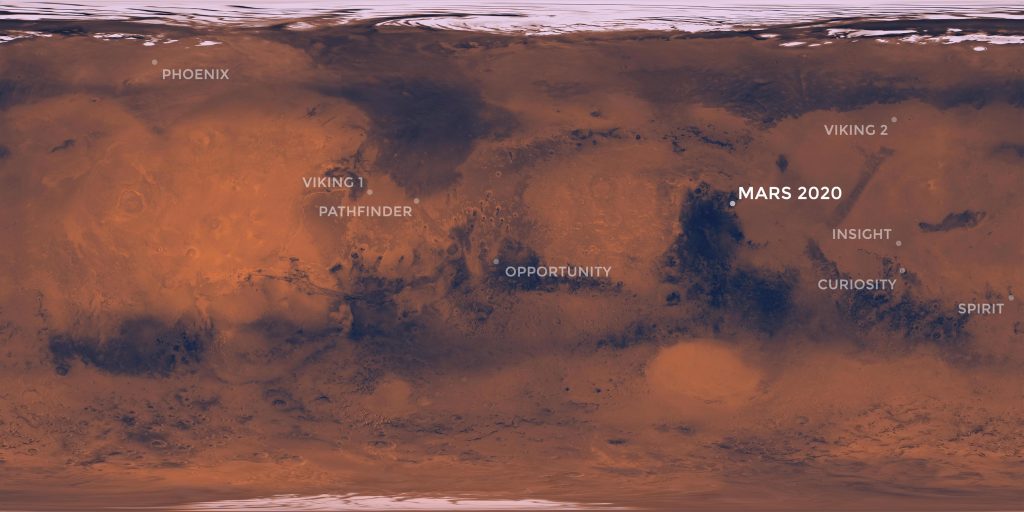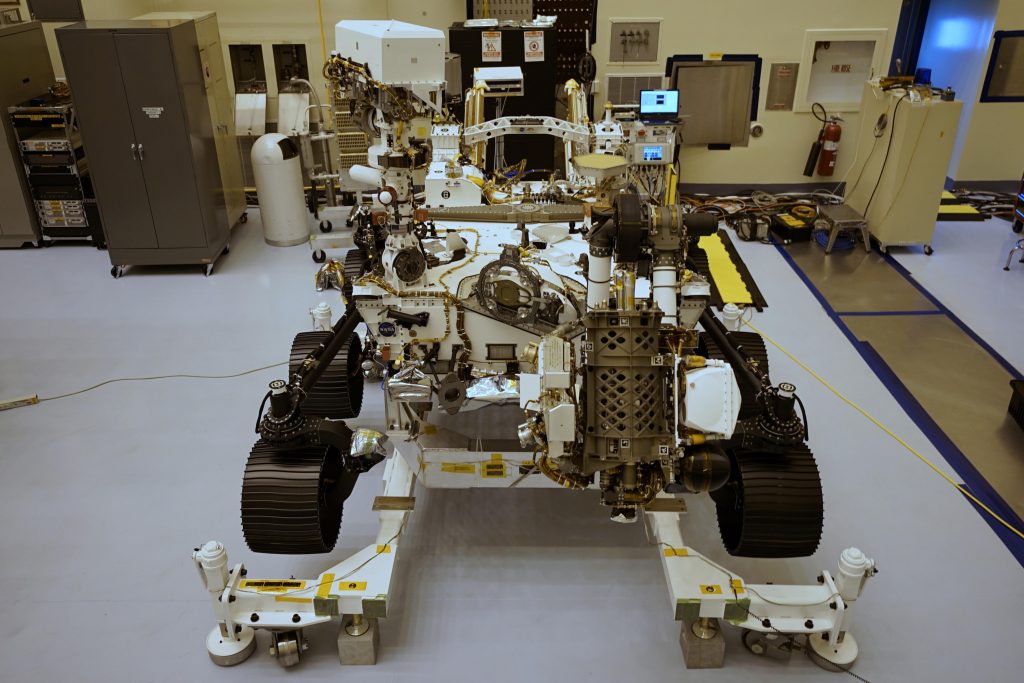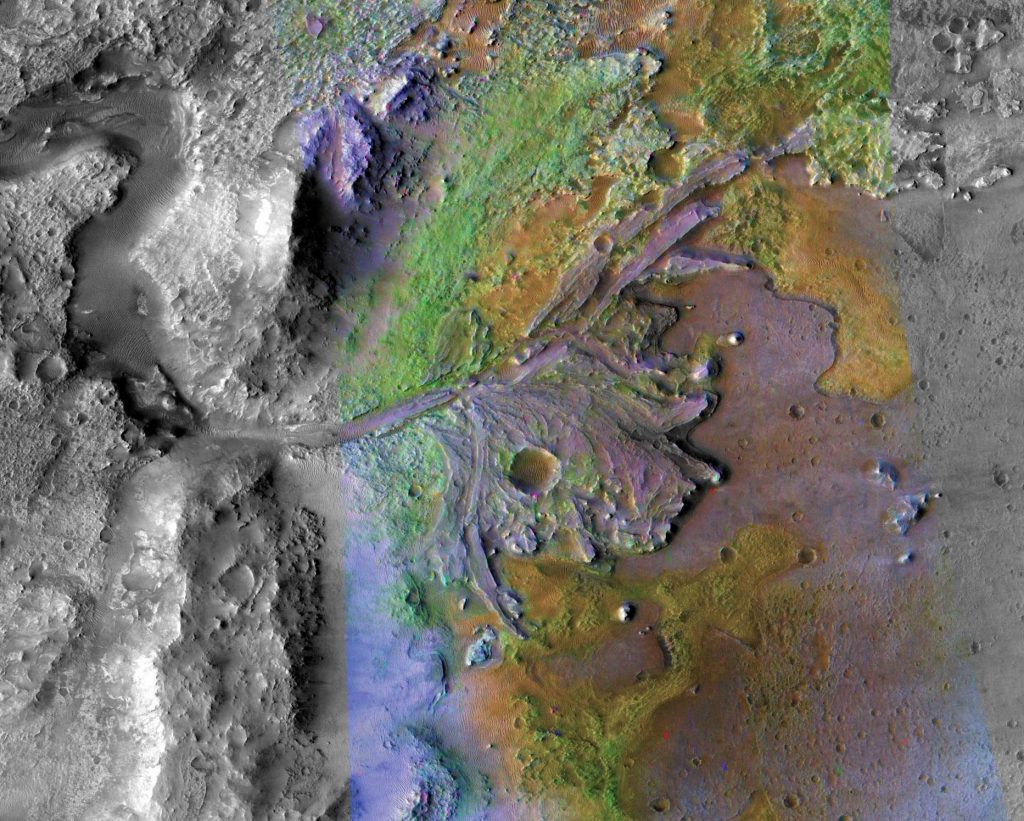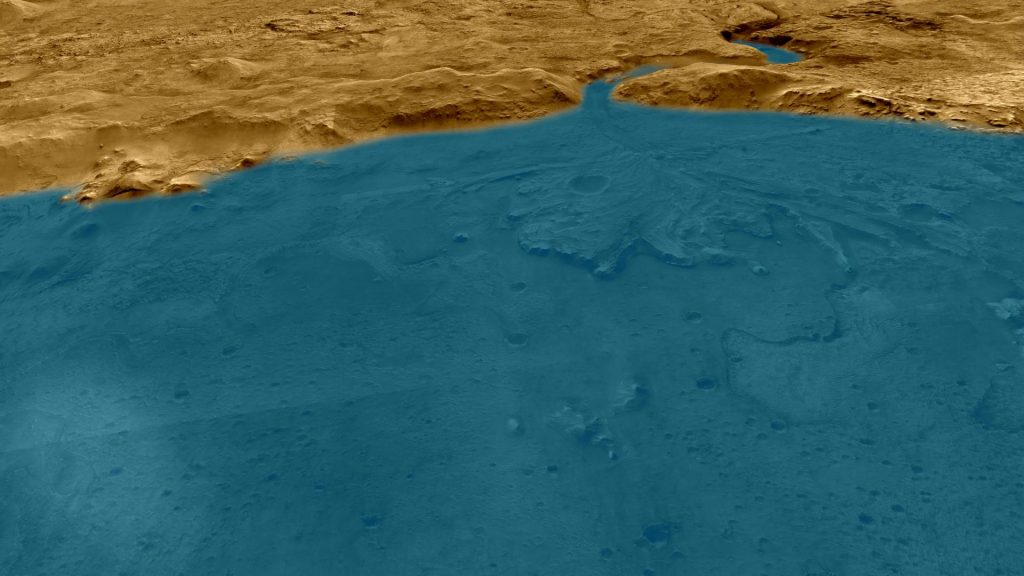
Images courtesy of NASA.
On Thursday 30 July, NASA’s Mars 2020 mission will launch from Florida. Its main aim is to search for evidence of Martian life. If it finds such evidence, Mars will turn out to be the closest part of the Biological Universe to Earth; in other words, the closest body in space on which alien life is found. But what are the chances of success? Are we not fairly sure by now that the red planet is a barren, lifeless desert?

Well, yes and no, as I explain in my 2020 book, The Biological Universe. Yes, we’re as certain as it’s possible to be that there’s no intelligent life on our planetary neighbour. And yes, we’re reasonably certain that there is no microbial life on present-day Mars. But no, we’re absolutely not certain that there never was any such life. In fact, several lines of evidence suggest that it probably existed. And it’s evidence of this past life that Mars 2020 is primarily looking for.

What’s the evidence that there may have been life on Mars in the past? For me, the most visually striking photos that are suggestive of past life are those that show the snaking paths of ancient river-beds, with tributaries converging into bigger rivers, just as they do on Earth, and the bigger rivers disgorging into various large lakes and seas. The site of one ancient lake is the now-dry Jezero crater, a little bit north of the Martian equator. This is where the Mars 2020 rover, called Perseverance, will land and start searching for signs of ancient life. On Earth, where there’s water there’s life. On early Mars, perhaps the same was true. Maybe life simply can’t help originating and evolving where there’s water.

Actually, liquid water on the ancient Martian surface is a very weird finding. If we couldn’t see the photographic evidence with our own eyes, scepticism would be in order. The reason is that our Sun, like other stars, was cooler at the start of its life and is getting gradually hotter as it ages. This means that the habitable zone around a star starts quite close in and moves out over time. So, in the early days of the solar system, we might expect Venus to have been in the habitable zone, not Mars. Why was Mars not an icy planet in the distant past? The answer lies in its atmosphere. If early Mars had a dense atmosphere, in contrast to present-day Mars, which has a very thin one, a strong greenhouse effect could have acted to retain heat, just as it does on Venus today. That’s the most likely reason for the running water, whose traces are still visible on Mars now.

Of course, exciting as it would be to get evidence of extraterrestrial life in the past, evidence of such life in the present would be even more exciting. But for that we’ll probably have to look beyond our solar system, at exoplanets orbiting distant stars. We don’t yet have the technology to send spacecraft to these, but we can look for biosignatures in their atmospheres using space telescopes. For more on that, see The Biological Universe.

Latest Comments
Have your say!